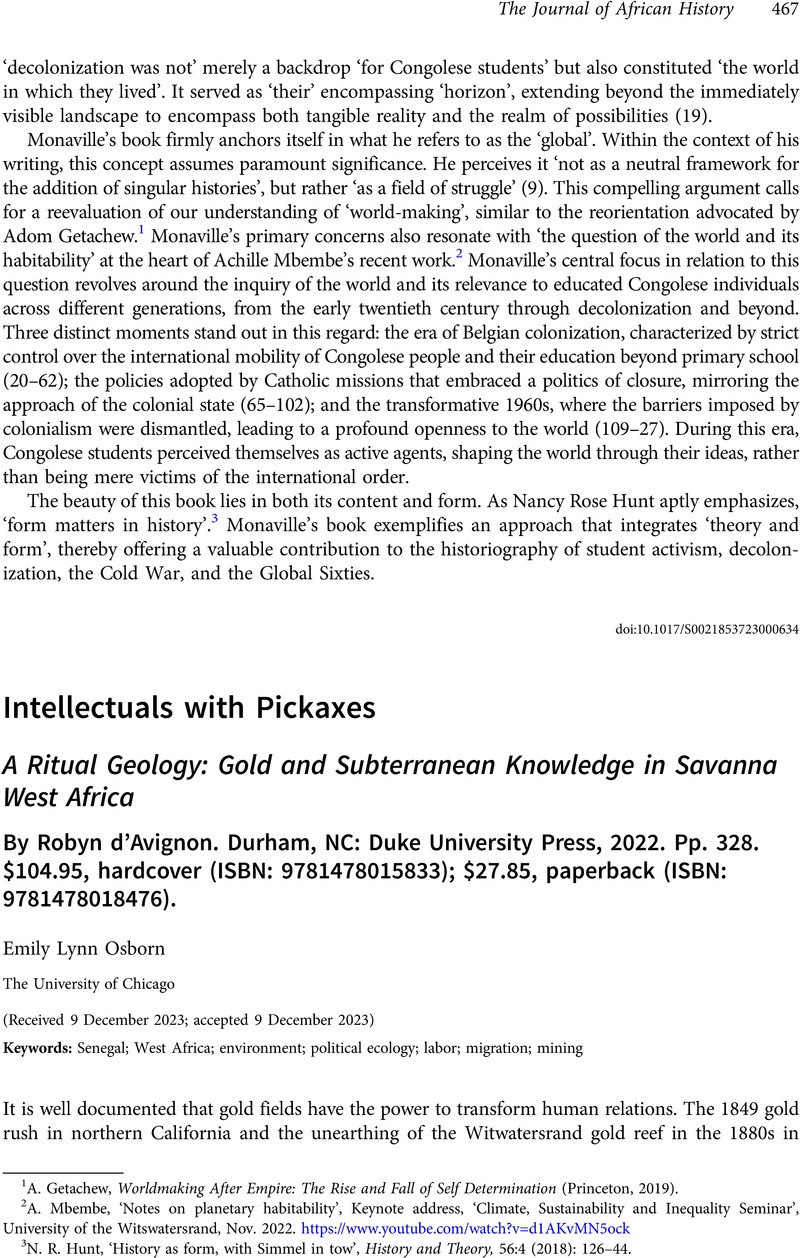No CrossRef data available.
Article contents
Intellectuals with Pickaxes - A Ritual Geology: Gold and Subterranean Knowledge in Savanna West Africa By Robyn d'Avignon. Durham, NC: Duke University Press, 2022. Pp. 328. $104.95, hardcover (ISBN: 9781478015833); $27.85, paperback (ISBN: 9781478018476).
Review products
A Ritual Geology: Gold and Subterranean Knowledge in Savanna West Africa By Robyn d'Avignon. Durham, NC: Duke University Press, 2022. Pp. 328. $104.95, hardcover (ISBN: 9781478015833); $27.85, paperback (ISBN: 9781478018476).
Published online by Cambridge University Press: 01 February 2024
Abstract
An abstract is not available for this content so a preview has been provided. Please use the Get access link above for information on how to access this content.

Information
- Type
- Book Review
- Information
- Copyright
- Copyright © The Author(s), 2024. Published by Cambridge University Press


